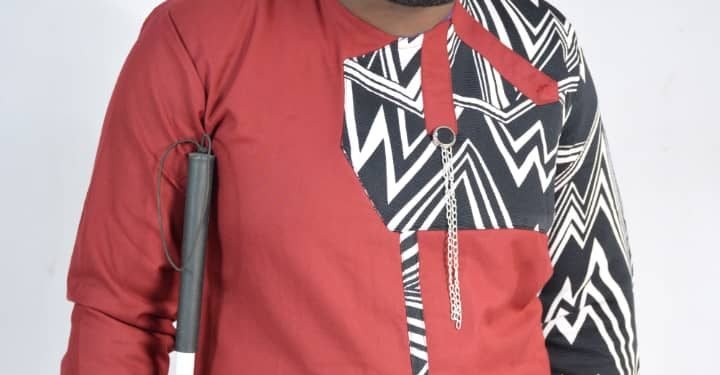By Kesah Princely in Cameroon
Growing up in my community, Bafut, over some two decades ago, the white cane was widely seen by many as a symbol of independence and equality.
However, much has changed today.
Bafut is just a few kilometres away from Bamenda, the chief town of Cameroon’s northwest region. Its inhabitants truly, used to believe in the power of the white cane because of Saint Joseph’s Children And Adult Home, SAJOCAH, a famous school for the blind.
Bafut is my land of birth.
I can vividly recall how we, blind pupils and students from different parts of Cameroon were respected because of our white canes and other assistive technologies which made us top in primary and secondary schools.
I felt anyone who was not blind was losing something very valuable. This should give you an idea of how included we were in community activities.
I thought that such respect for the white cane would be everlasting, but the injustices against the white cane in Cameroon later became so alarming that my childhood memories were almost completely erased.
Annoyingly, the education we used to excel in has almost not taken most of us anywhere. It does not suffice to be educated, bagging home degrees which do not seem useful to the community.
You could also read Formal education is a farce for blind and visually impaired people in Cameroon
Higher education is indeed a farce to blind people in Cameroon who take a lot of pain to navigate through and end up unemployed just because the working environment does not accommodate them.
In 2017, I applied for a job at a certain media organ belonging to a prominent religious body in Bamenda, a Northwest region of my country. what would you qualify the type of treatment I received if not injustice against the white cane?
Three days after I put forth my application, the manager via a phone call informed me I was not taken because the building hosting the media outlet was not compatible with the nature of my disability.
This was not the shock I soon found myself in though.
A week later, I reapplied at the same institution but this time voluntarily.
Guess what?
My request was granted under the very condition I had been overtly told I could not work because I was a white cane user.
It then appeared to me that the church which white cane users like myself should run to in times of affliction was perhaps one of the most exclusionary grounds.
You could also read Cameroon: How churches are a breeding ground for the exclusion of Persons with Disabilities
Puzzled at the inequalities blind people face in their communities, George A Bonham, in the 1950s, started an aggressive campaign to make the white cane a symbol of independence and equality.
The campaign was so fruitful that US President, Johnson officially designated October 15 as white cane safety day.
As nearly 100 countries commemorate the 2023 edition of the International Day of the White Cane, I challenge humanity not to be blind to see the ability of visual impairment.
As Helen Keller once put it, “the worst form of blindness is to have sight without vision”.
Society should stop judging us on the basis that we, white cane users, are void of skills.
A change in mindset would make me forever reminiscent of my childhood days when I felt loved and respected in my Bafut community.
